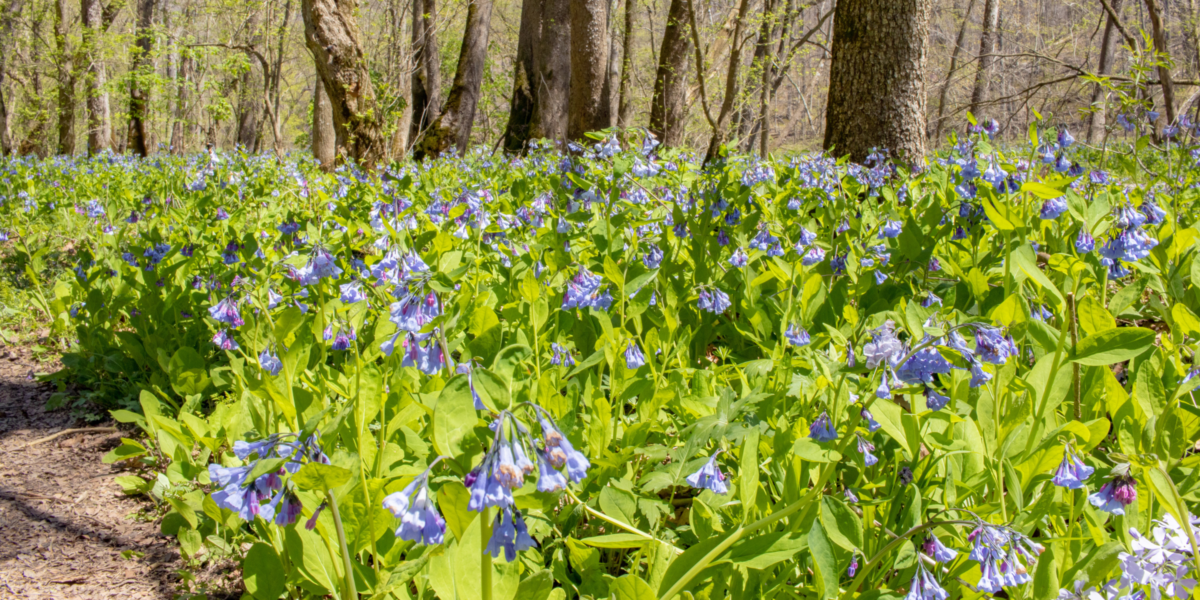Hall Woods includes a loop trail through a mature wood known for wildflowers, ferns and songbirds, and offers access to Big Walnut Creek, one of the highest-quality streams in the state.
Hall Woods Nature Preserve, along with Fortune Woods and contiguous properties managed by the DNR and Nature Conservancy, form the Big Walnut Natural Area. Hall Woods includes a loop trail through a mature wood known for wildflowers, ferns and songbirds, and offers access to Big Walnut Creek, one of the highest-quality streams in the state.
A post marks the start of the loop, and the trees, primarily maple and white oak, begin to get larger. The path descends via wood stairs to Big Walnut Creek and one of its minor tributaries.
From there, the trail leads upstream through a floodplain forest filled with the bright red, five-part blossoms of fire pink. In early spring, the woods floor is carpeted with Virginia bluebell. Spring also marks the return of migratory birds, and plentiful Cerulean and yellow-throated warblers call from the trees, with northern parula warblers closer to Big Walnut Creek and worm-eating warblers in the ravines.
Wooden stairs provide the path from the ravine to a trail through abundant broad beech, fragile and maidenhair ferns that leads to the top of the ridge. At the bluff that overlooks the valley carved by the creek, the trail returns to the beginning of the loop.
Hall Woods was dedicated as a State Nature Preserve in 1987 and offers deep woods rich with trees and a lush understory, wildflower-covered slopes, and glistening streams full of life. A microcosm of the entire Big Walnut Natural Area, it is owned and managed by the Indiana Division of Nature Preserves.
Three of Putnam County’s nine historic covered bridges are nearby, with Baker’s Camp Bridge being just one mile north. Rolling Stone and Pine Bluff bridges are further, on the north side of State Road 36, along the edge of Fortune Woods, another section of the Big Walnut Natural Area which, in total, takes in more than 2,500 acres.

